Discussed in this post: 9 BOOKS (Genome Editing and Engineering; Security, Territory, Population; We Do This ‘Til We Free Us; The Tragedy of Heterosexuality; Work Won’t Love You Back; Heart Berries; Mountains of the Mind; The Taiga Syndrome; and Tenth of December); 5 MOVIES (About Endlessness; Gretel and Hansel; Relic; Saint Maud; and Midsommar); and 3 DOCUMENTARIES (A Survivor’s Guide to Prison; This Way of Life; I’ll be Gone in the Dark; and A Glitch in the Matrix).
Books
1. Genome Editing and Engineering: From TALENs, ZFNs and CRISPRs to Molecular Surgery edited by Krishnarao Appasani.

Reading about evolution led me to reading about epigenetics which, in turn, led me to reading about genetics more broadly and, these days, it’s impossible to think or speak about such things without some mention of genome editing and engineering. One hears about CRISPR-related technology and activity even in the popular media (“CRISPR” stands for clustered regularly interspaced short palindromic repeats—a smarty-smart method deployed by bacteriophages, which identify these patterns in the DNA or RNA of their hosts and then insert themselves into the host genome that we, humans, have repurposed for some pretty straight-forward—but not actually that straight-forward—cut and paste style gene editing). So, doing what I do, I figured I’d read an advanced level textbook on the subject. There’s some dense reading here but, with patience, a curious layperson like myself can figure it out (by which I mean, understand what people are talking about—just don’t ask me to actually try and do any gene-editing). To me, this is a super fascinating domain of science and I found the various contributions did an excellent job of mapping out why everyone feels like they sky is the limit when it comes to what the future might hold with gene-editing, even if they also showed why things must move slowly, what challenges (expected and unexpected) have arisen, and where initial breakthroughs and disappointments of occurred. When I wasn’t scratching my head trying to understand what I was reading, my jaw was constantly on the floor because, wow, this is amazing and also, wow, who knew that so many studies for cures to human diseases now meant genetically modifying mice and pigs and monkeys and other animals so that we could give them all kinds of human diseases to test various cures on them.
2. Security, Territory, Population: Lectures at the Collège de France 1977-1978 by Michel Foucault.
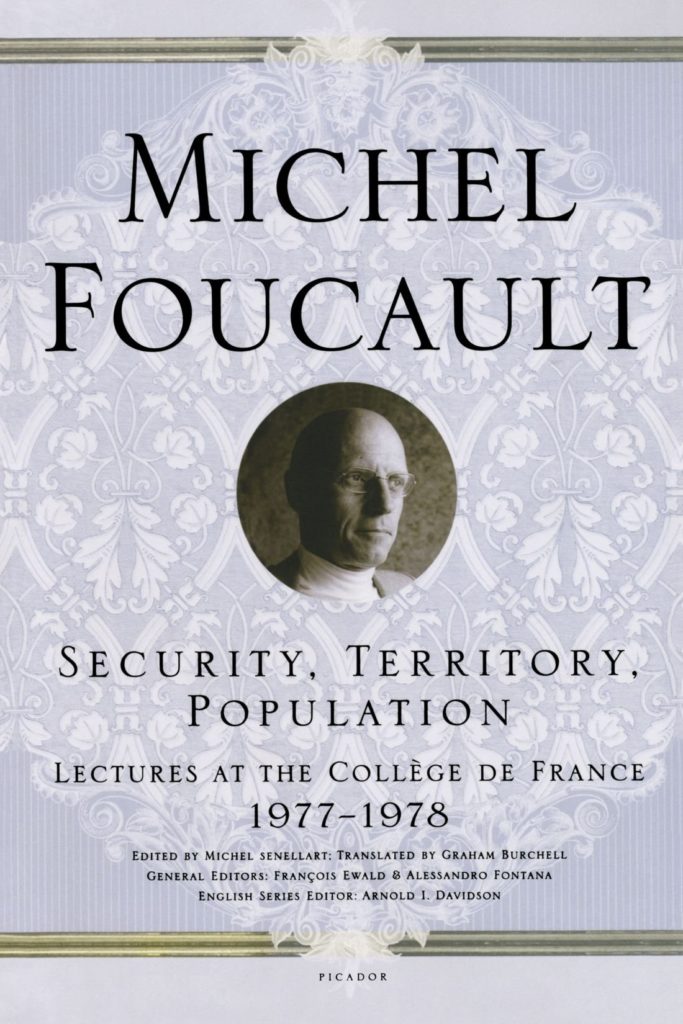
This is probably one of the most important series of lectures delivered by Foucault (mon beau). It marks a shift from his focus on the sovereign and the disciplinary institutions that arose based upon the evolution of sovereign power and its relation to individually-constituted subjects, to a focus on governance or governmentality in relation to a population and variously flows that are not so much controlled as secured. We move from the sovereign territory of the prince to the transnational markets of the bureaucrat, and shift from the soul as the prison of the body (as famously stated in Discipline and Punish), to the free individual as a data point for statistics used to structure flows (of people, of goods, of birth and death rates, of price points, of diseases, and so on) in a way that secures the best possible outcomes for the nation-state. It’s a fascinating read and Foucault is nothing if not one of the very best story-tellers of our time. Highly recommended.
3. We Do This ‘Til We Free Us: Abolitionist Organizing and Transforming Justice by Mariame Kaba.

Mariame Kaba is one of the central figures in the transformative justice movement. It’s hard to overstate her significance there, even though I’m sure that she, herself, would be very quick to point out that all her efforts arise in coordination with others and everything that has been done, has been done collectively. However, because Kaba spends so much time on the ground, at the front-line, in the trenches, doing the work, she hasn’t been out there pushing material for publication a whole lot. So, like many others, I was super excited when this collection of her various interviews, articles, short talks, and presentations was published this year. As always, this is a genre that I struggle with (I reading short articles that are often repetitive with small variations on a few central themes is a struggle for me even with the best of authors), but I’m still glad I read through this. For those familiar with transformative justice, this is a good refresher from one of the very best practitioners. For those new to the topic, this is a great starting point.
4. The Tragedy of Heterosexuality by Jane Ward.
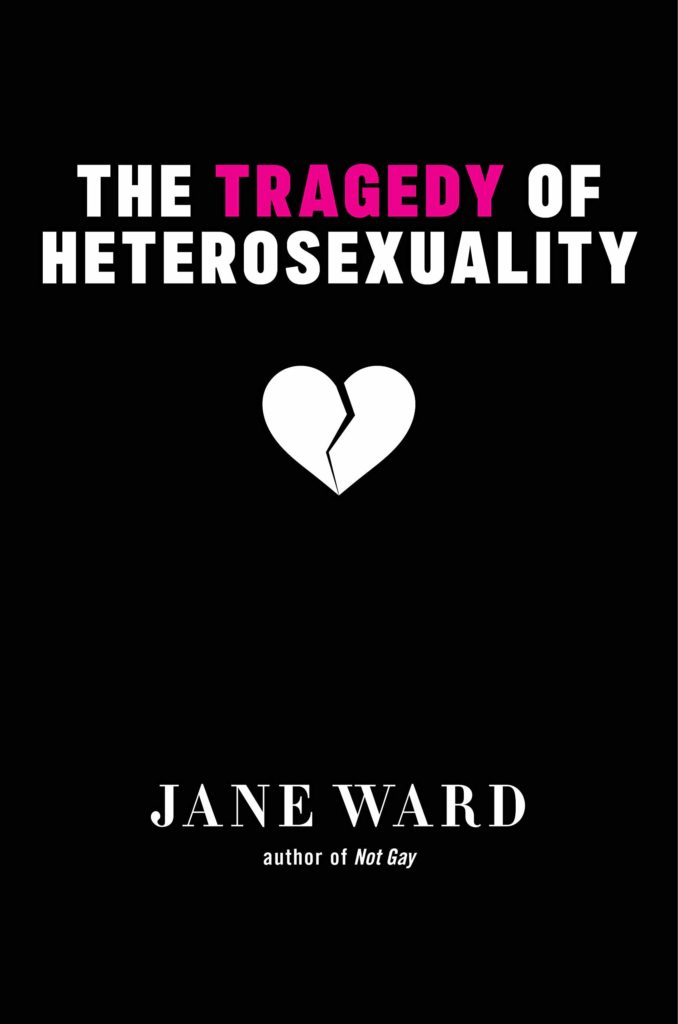
One of the most interesting, brilliant, and yet also easily readable books I have read in a long time, The Tragedy of Heterosexuality is a critical examination of straight culture from the perspective of a Queer scholar, Dr. Jane Ward. As such, it reverses the gaze straight culture directs at Queer folx and it also shifts the focus of that gaze from women and Queers to straight people and, most especially, straight cis-men. However, rather than calling for straight men to become Queerer, or calling for straight women to abandon straight men altogether (although Ward does an excellent job of asking just why so many straight-identified cis-women persist in desiring straight-identified cis-men), Ward urges and straight-out invites straight men to become even more straight. She invites straight men to love women so much that they start listening to them, stop harming them, and learn to explore and discover what Queer women have explored together for a very long time—that there need be no conflict between love and desire, between lust and respect, between finding a person eminently dignified and eminently fuckable. I loved this book. I’m actually hoping to participate in putting together a book club with other straight fellas to discuss this work with Dr. Ward herself involved in the conversation so if you’re interested in participating in that, holler at me!
5. Work Won’t Love You Back: How Devotion to Our Jobs Keeps Us Exploited, Exhausted, and Alone by Sarah Jaffe.
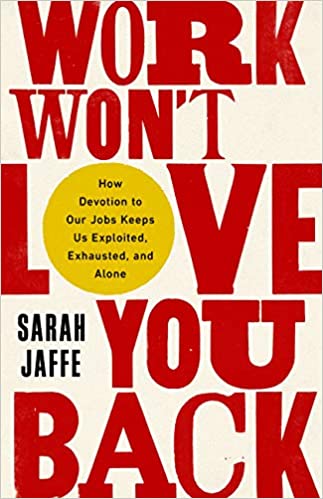
Over the years I have worked in social services, I have often observed the ways in which abusive bosses and institutions exploit the very best, most devoted and kindhearted workers but demanding they do more and more with less and less, by blaming the workers if services don’t continue to operate (even if they are short-staffed or fundamentally unsafe spaces for program participants or staff), and by forcing unconscionable decisions onto them (i.e., “either you decline this cost of living pay increase—for the fifth year in a year—or we’re going to have to shut down this essential service to people who may die without it”). So, of course, I was struck by the title of Sarah Jaffe’s book and, given the buzz around it, I picked it up without looking into it any further. That was a mistake in that the book itself is pretty fluffy and basic and, it turns out, I’ve read pretty much everything that Jaffe uses as source material for this book (from social reproduction theory to criticisms of the non-profit industrial complex to a lot of different theories related to labour and the exploitation thereof). What Jaffe does show is that the exploitation of workers by means of taking advantage of their passions and values is pretty much ubiquitous to every area of work. All the more reason for sustained labour organizing and the building of solidarity networks across institutional, vocational, and disciplinary barriers.
6. Heart Berries: A Memoir by Terese Marie Mailhot.

Imagine Karl Ove Knausgaard but as an Indigenous woman in Canadian-occupied territories. Perhaps because she is a woman and doesn’t feel the need to repeat herself endlessly or believe that every single thing she has to say should be said (as most men seem to think when they have an audience—Knausgaard first and foremost, perhaps), imagine, then, that woman writing a much shorter text, a single volume, full of the same raw, painful, tender, and beautiful honestly that reminds us that most of us are profoundly likely and deeply difficult to like, all at once, both at the same time, with no easy resolution to that aporia. This comparison came to mind frequently while I was reading Mailhot’s memoir which eschews the standard conventions of the Indigenous survivor and overcomer confessional, and moves that whole conversation into an entirely different register. It is this shift that makes her work stand out (to me). Surviving, confessing, overcoming, improving, whatever, all of these things can become prisons, disciplinary forces, and tools used by colonizers. In response to them, sometimes it is important to say, let’s get fucked. And let’s stay fucked.
7. Mountains of the Mind: Adventures in Reaching the Summit by Robert MacFarlane.

Robert MacFarlane is my current author who can do no wrong (he was, after all, my number one pick for best of the best that I read last year). So I continue to work my way through his collected works. Mountains of the mind is one of his earlier books and it draws on his personal fascination with mountaineering while asking how mountains, and being on them or summiting them, came to represent what they do in the Occidental imagination. It’s post-Freudian, post-Kantian historical, literary, and psychoanalytical twist on nature writing, although describing it in that way does a disservice to the simplicity and beauty of MacFarlane’s prose and the pleasure produced while reading it. As was expected, I enjoyed it very much.
8. The Taiga Syndrome by Cristina Rivera Garza.
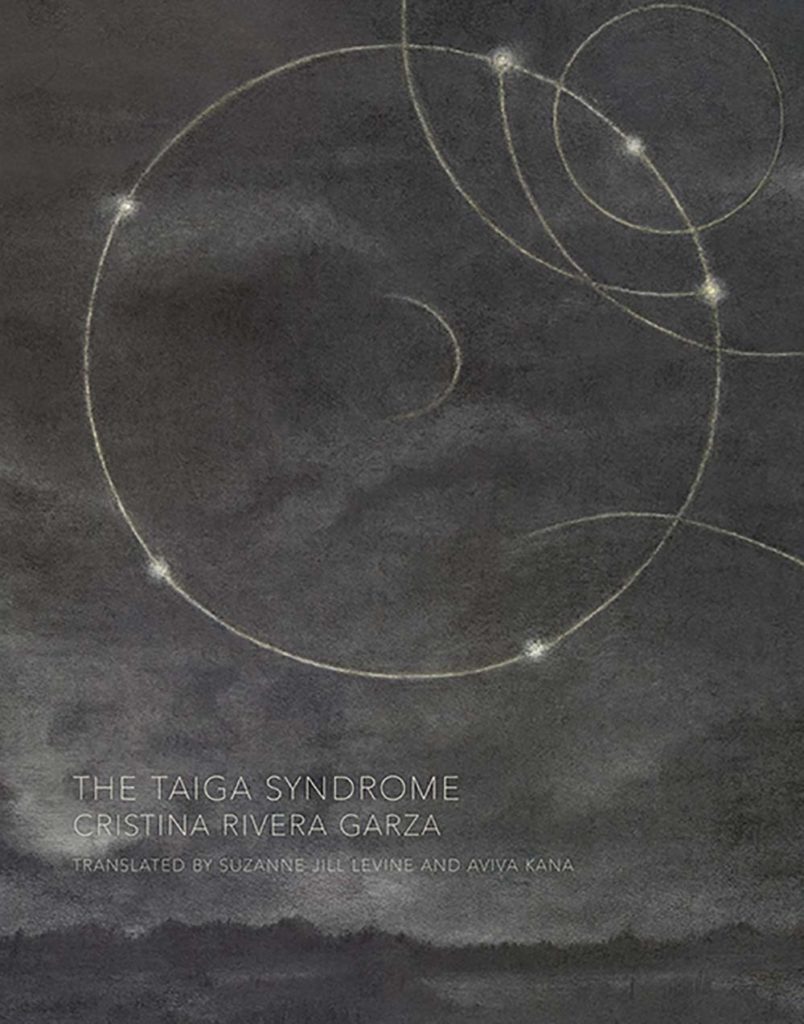
I am still trying to figure out what to make of Cristina Rivera Garza’s hypnotic, fractured, almost gothic take on the Mexican detective novel. The protagonist pursues a woman who fled a wealthy man but who left clues along the way and we come closer and closer to something tantalizing and strange, encountering more than one inexplicable being or event along the way, and what do we find at the end of it all? I’m not sure. Is the narrator sure? I’m not sure. What is being deliberately withheld, what is still not known, what is being entirely fabricated, what is being hinted at, what is being partially revealed, and what is ultimately unknowable because, although encountered, it is too inexplicable to be put into words? Again, I’m not sure. Like I said, I’m still trying to figure out what to make of this.
9. Tenth of December by George Saunders.
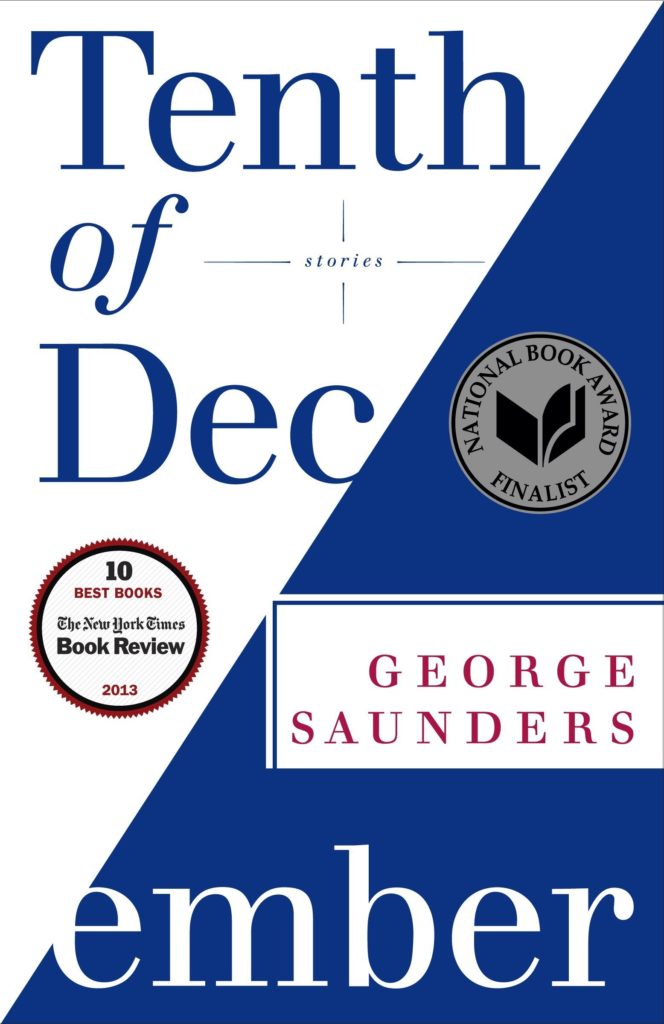
Despite my love of fiction, I still consider myself a relative noob when it comes to reading short stories. A few authors in the last couple of years have really turned me onto this genre—Carmen Maria Machado, Ray Carver, Clarice Lispector, Kristen Roupenian—and I’m finding myself increasingly curious about it—and I find myself increasingly curious about it. This collection by George Saunders (a much appreciated gift from a co-worker) is an exceptional contribution to the genre. There are some writers who capture the readers attention because they establish a certain kind of flow—an enchanting, compelling, or hypnotic voice that one follows, and desires to continue following, wherever it meanders. Saunders is not that kind of author. Saunders is more like a master jeweler who carefully selects and polishes every word, every sentence, every punctuation mark, to bring it to its full brilliance within the setting that gives everything the best opportunity to shine. This is a remarkable collection, wherein each story brings out strong and even contradictory emotions simultaneously within the reader. I can see what Saunders describes writing as very hard work. A lot of hard work must have gone into writing these stories but, as a reader, I am grateful for that. I am eager to read more of his work.
Movies
1. About Endlessness (2019) directed by Roy Andersson.

I am an unapologetic Roy Andersson fanboy. So much of life is absurd and dreary and hopeless and hilarious and immaculately posed and miraculous and just fucking perfect. It’s hard to hold all of those elements together at one time. Andersson manages to do so. Thus, while About Endlessness feels a bit like endnotes to his Living Trilogy—which concluded with a scene of people standing at a bus stop discussing what day it is versus what day it feels like it is—it’s still well worth watching.
2. Gretel and Hansel (2020) directed by Osgood Perkins.

Osgood Perkins’s rendition of the fairly tale of Hansel and Gretel is an excellent case study of where pop feminism goes wrong when it thinks it is empowering and liberating and fighting against the patriarchy simply because it centres a strong female lead (something signaled from the get-go with the reversal of the names associated with this fairy tale in the title of Perkins’s movie—not Hansel and Gretel but Gretel and Hansel). It’s too bad because Perkins is a talented director who seems to be continually improving as an artist with every film he makes. So, okay, Gretel is the strong female lead, significantly older than Hansel and oppressed by poverty she goes looking for work in the manor house of a creepy old man who really just wants to use her for sex. So, if there is violence required one might think a feminist reinterpretation of this tale would grant us some kind of vengeance against men who hoard wealth and then demand sex from women whom they have deprived of the bare necessities of life. But this is not to be in Perkins’s pop-feminist interpretation. Although it could have been. For the witch in the woods, with whom Gretel and Hansel begin to reside, does, in fact, help Gretel to connect with her strength and the power that she has. Gretel is strong. She is powerful. She is centred. And then she comes into her own, not be killing the men who have oppressed her and her brother, but by brutally slaying the witch who woke her up to her strength. The men are untouched. And apparently strong women are those who kill other women to replace them. This is like, Hillary Clinton 101. Rise to power on the backs of all the Black and Brown women whom you have oppressed to accumulate the stolen wealth you now hoard and then claim yourself as a role model for any all other women in a bleach-out politics of feminist-capitalism (which is as logical a thing as anarcho-capitalism or a square-circle). Disappointing, given the otherwise excellent art produced in this folk horror piece.
3. Relic (2020) directed by Natalie Erica James.
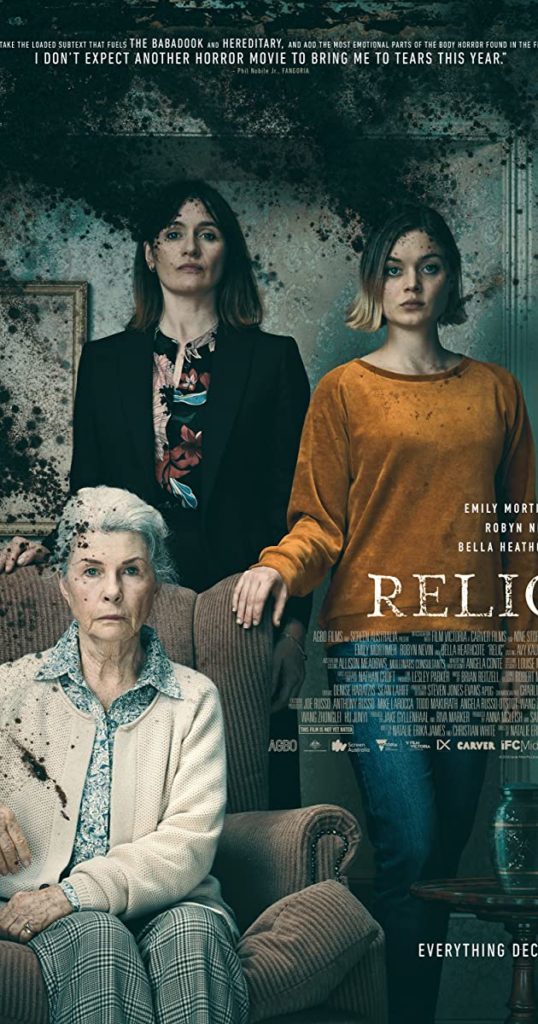
Feminist horror, I am gradually concluding, quite often has less to do with pimping GIRL POWERTM, than it has to do with how a film is structured. To me, this is what makes Julia Ducournau’s Raw one of the great feminist movies of any genre. Natalie Erica James also understands this and so what do we find with Relic? A meditation on death, memory, loss, and intergenerational trauma (and, perhaps, the intergenerational transmission of degenerative neurological disorders), as those things affect a grandmother, her middle-aged daughter, and her adult granddaughter. Three well developed female leads. All relating to one another in complicated ways that reflect the complexity of real life. All packaged up in something like a suspenseful, haunted house, psychological thriller with nary a man to be found (and certainly no hulking man chasing a screaming, conventionally beautiful and highly sexualized topless woman down a hallway of mirrors before brutally dismembering her—which, I think, is basically what most mainstream North Americans think of when they think of the horror genre). Relic is a well-done movie even if, at times, the haunted house and deep dark woods symbolism felt a little too-obvious and over-played (while simultaneously feeling a bit like an unnecessary add-on—especially the part about the woods, the cabin, and the window in the door).
4. Saint Maud (2019) directed by Rose Glass.

There’s not doubt that the character of the nurse who harms instead of heals has cycled back around and become a popular figure. From the killer nurses in American Horror Story, which calls to mind Kathy Bates as Annie Wilkes in the film version of Stephen King’s Misery (which scared the ever-living shit out of me when I was young) to Sarah Paulson’s interpretation of Mildred Ratched in Ratched, a direct spin-off of One Flew Over the Cuckoo’s Nest, what’s old is new again. And, of course, the motif of the religious icon, devotee, or fanatic who ends up acting in monstrous ways is as old and persistent as the horror genre itself (or, for that matter, as old as religion itself). Rose Glass combines these themes in the character of Maud but an otherwise fairly standard horror movie ends up drawing in the viewer, largely due to the acting abilities of Morfydd Clark (who plays Maud) and the ways in which the story arc reveals just how irresistible epiphanies, transfigurations, and ascents into madness (come what may, come what may) are to those who live a daily life that is unbearable and to those whose hurts go unseen and unheard—in other words, to so many of us.
5. Midsommar (2019) directed by Ari Aster.

A skilled craftsperson, who appreciates a slowly-building sense of dread and a camera that doesn’t flinch when the time comes, Ari Aster is definitely on everybody’s watchlist when it comes to film-making and the ongoing expansion of the horror genre away from the stereotypes and motifs that defined it in the ‘80s and ‘90s. Hereditary was exceptional and Midsommar proves it wasn’t a one-off. Aster knows what he is doing and I’m very curious to see if his next film (Disappointment Blvd., which is said to star Joaquin Phoenix and Meryl Streep and which Aster has stated will be a four-hour horror film) will end up being the kind of thing auteur directors produce when given free-reign (like P. T. Anderson successfully did with Magnolia and like George Lucas entirely failed to do with Stars Wars: Episode I). We shall see soon enough (and we shall see where P.T. Anderson lands when Soggy Bottom is released later this year, but that’s off-topic). Anyway, all that to say, Midsommar is a solid contribution to the folk horror genre. However, since watching it, I’ve been trying to puzzle out what it says about Whiteness. It is, after all, an overwhelmingly White movie, populated by blue-eyed blondes in Sweden, with a total of three non-White people (all of whom disappear from the company of the living by the end of the third act). So, it makes me question: is this standard Hollywood White-focused fare or, to push it one step further, is this Hollywood adjusting and moving to more and more White environs in order to be able to excuse themselves for continuing to prioritize Whiteness or is Aster trying to say something specific at Whiteness qua Whiteness? A focus on ancestry and traditions that involve the annihilation of outsiders in order to persist as the otherwise-quite-lovely-thank-you-very-much people that they are (just don’t ask about their sex lives—although, here, I think Aster engages in a brilliant reversal of the standard uncomfortable sex scene that comes prepackaged for the horror genre), surely suggest that Aster intends the audience to think more deeply about this topic. Or do they? Because the final act may suggest otherwise and it’s hard to force that into some kind of commentary on Whiteness, unless one wishes to posit someone like Hillary Clinton as the solution to White supremacy. So, yeah, I’m on the fence with this still.
Documentaries
1. A Survivor’s Guide to Prison (2018) directed by Matthew Cooke.

The best way to avoid going to prison is to be born wealthy and White. If you’ve got those bases covered, you’re probably okay. But if you don’t fall into those categories then, look out. Given that prisons are full to overflowing with people who are innocent, with people who took a plea bargain and pled guilty to crimes they did not commit in order to avoid the possibility of going to trial and ended up having to serve much more severe sentences if found guilty (this is how the vast majority of convictions are produced), then avoiding “a life of crime” isn’t really any kind of guarantee that you won’t go to jail (especially if you have been impoverished and/or are a person of colour or a member of a racialized group). Plenty of my friends have done time for crimes they did not commit and I’ve also had cops accuse me of things I did not do (although I’m sufficiently wealthy and sufficiently White to have those charges withdrawn—once because I was able to produce video evidence in one instance that demonstrated the cops were fucking liars who actually assaulted me and not vice versa and another time because I was able to demonstrate I was not the person they said I was, although in that case I had to give up my prints to clear my record—funny how, once you get on their radar, charges suddenly appear on your record like that and then you have to fight for what can take years to clear them off).
Anyway, all that to say, I sometimes find myself thinking about how I would survive in prison and so, while trying to stay awake long enough one night so I could see Jessica when she got home, I decided to watch this Survivor’s Guide. I think it tries to be both critical of the prison industrial complex, while also being somewhat practical and not suggesting that prison is gonna be fucking easy just because a lot of people there are innocent. Prison is hell. It’s violent. At some point, you will have to fight to show that you will fight if required. If you don’t, you’re doomed. It’s not anything people probably haven’t already learned form dozens of other documentaries or shows or books but it was decent enough. As always, the very best thing to do is to not go to prison in the first place. Avoid the cops. Do anything possible to make bail. Shut your mouth, lawyer up, and don’t rat. And, if you’re not wealthy and White, be lucky. Good luck with that!
2. This Way of Life (2009) directed by Thomas Burstyn.

This way of Life focuses upon Peter Ottley-Karena who, from what I gathered from a little looking around after viewing the film, is a White Australian who was adopted into a renowned Maori family and home and who then acted in all kinds of Entitled-White-Male-Trying-To-Get-Back-To-Nature-But-Really-Just-Fucking-Everything-Up-Astronomically-And-Hurting-Everyone-And-Everything-Around-Him ways. You only get hints of this in This Way of Life, though, because Thomas Burstyn valourizes Peter and his, like, his love of his freedomz and like how he’s the victim and stuff. But a number of things set off my spidey-sense when I watched the film and that led me to this blog post and subsequent comment thread: This Way of Life: A Karena Viewpoint (https://frayingthenet.com/2013/09/04/this-way-of-life-a-karena-viewpoint/comment-page-1/). ‘Nuff said. Exept, um, this makes the similarly between the posters used for this film and D. W. Griffith’s Birth of a Nation to be a little more than a bit discomfiting. Just sayin’…

3. I’ll Be Gone in the Dark (2020) directed by Liz Garbus, Myles Kane, Josh Koury, and Elizabeth Wolff.

Joseph James DeAngelo, dubbed “the Golden State Killer” by Michelle McNamara, was responsible for, at minimum, 120 robberies, 50 rapes, and 13 murders that were also accompanied by further rapes, between 1973 and 1986. He was not identified and arrested until 2018, due largely to the work of McNamara and a few others, as detailed in this docuseries which takes its title from the name of McNamara’s post-humously published book (McNamara died in 2016 of an accidental overdose, two years before DeAngelo was identified, while working on her final draft of the book; the title itself is a direct quote of something DeAngelo said to one of the teenage girls he sexually assaulted). I’m not overly interested in the “true crime” market that exists around serial killers and serial sex offenders, but this case interested me because DeAngelo worked as a police officer from 1973 until 1979—the time period when he committed the (at minimum) 120 robberies and 50 rapes. In 1979, he was fired from the police force because he was caught shoplifting dog repellent and a hammer. So, I thought to myself, what does it say about police and the culture of policing, that this person never even showed up in any list of suspects until they were finally able to use DNA family-tree tracking services to identify him through DNA samples that still exited on file? Did nobody in the force suspect anything? Not even after he was fired? Not even after he stalked and threatened to kill the police chief who fired him? Nothing at all?
Unfortunately, this docuseries leaves this piece of the puzzle entirely untouched. Instead, it focuses much more on McNamara, the others who worked with her to ultimately identify DeAngelo (including her husband, Patton Oswalt, who surely played a role in making this docuseries a tribute to his deceased wife), and the victims and survivors of DeAngelo’s violence (including some of his family members who speak about what it did to them when they learned his identity). All in all, I like this recentring of different characters, instead of making everything about DeAngelo but, dang, I still have a lot of questions about if other cops knew things and covered for him or didn’t follow-up on questions or concerns because of the thin blue line and all that.
4. A Glitch in the Matrix (2021) directed by Rodney Ascher.
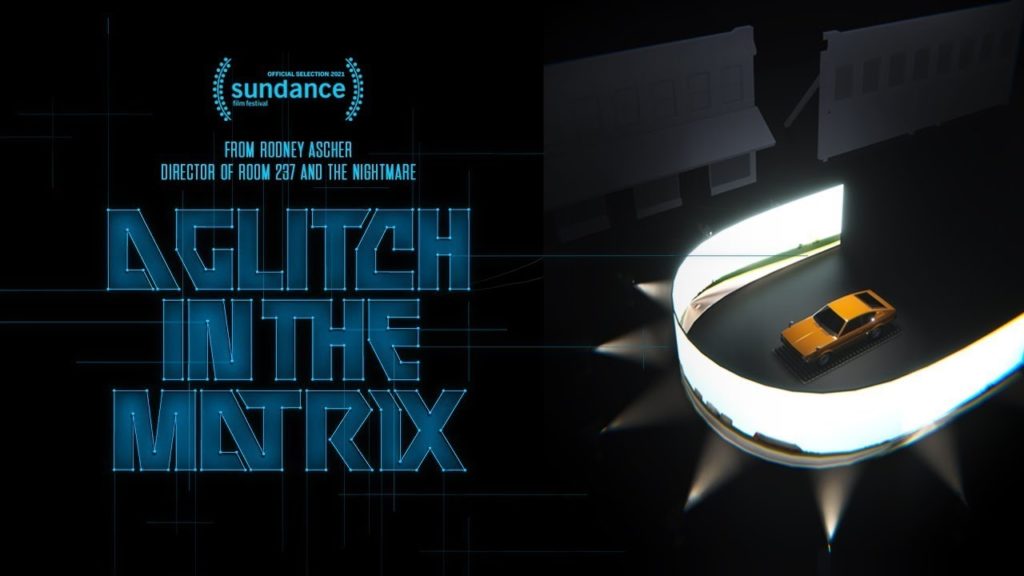
Rodney Ascher has a keen eye for documentary subject matter. In 2012, he directed Room 237, a film about all the wild theories people have about Stanley Kubrick’s version of The Shining (a documentary I found much more interesting than The Shining itself, although I understand that all the Kubrick fanboys will take great offense to this), and in 2015, he produced The Nightmare, which he explored the seemingly more-real-than-real night terrors that some people have, often revolving around shadow people (which, again, I found fascinating due to the ways in which shadow people visit some of my loved ones in their dreams and given that they once tried to come for me, too, but I shape-shifted into a giant White bear and they fled and never returned). I skipped his last offering (The El Duce Tapes) largely because I am not at all interested in the subject of that film (a Neo-Nazi, misogynist, and musician who is fucked-up because his daddy helped developed the napalm bombs dropped on Vietnam isn’t someone I want to hang-out with for too long), but A Glitch in the Matrix seemed interesting enough, based on Ascher’s oeuvre alone, to give it a watch.
The documentary is about simulation theory, the idea that we live in an artificial reality, those who hold to this theory and what consequences, if any, follow from this. It’s not a thought experiment that I’ve ever found super-fascinating, and I tend to deploy a hermeneutics of suspicion rather than trust when it comes to theories that relate life and living beings to machines, algorithms, programs, and computers. It’s not a paradigm that I find useful, accurate, or even ethical. However, the documentary itself was interesting enough and I especially perked up when the lady scholar with the blue hair (alas, I couldn’t find her name in the cast lists I found on-line… although all the dudes who were interviewed get mentioned by name… wtf) spoke about how simulation theory fits so well with mass-shooter fantasies. She was, in my opinion, the most interesting speaker in the whole film. All in all, though, a disappointment when compared with Ascher’s earlier work.